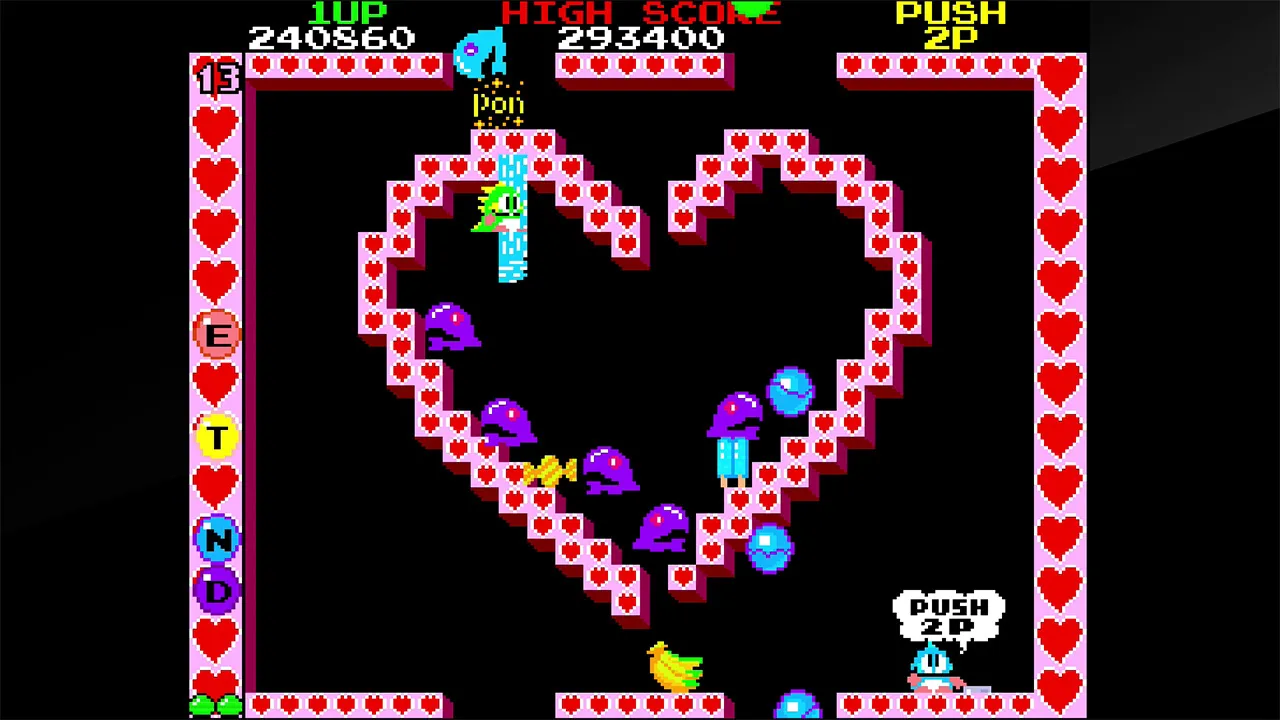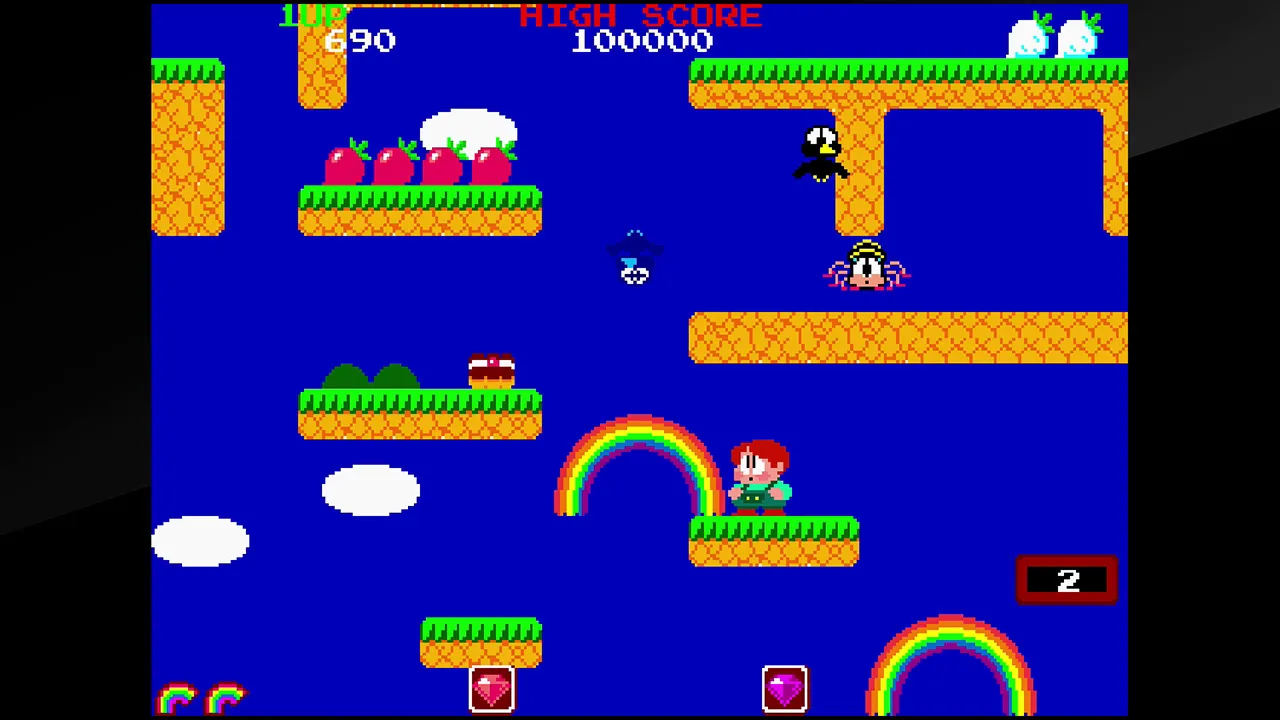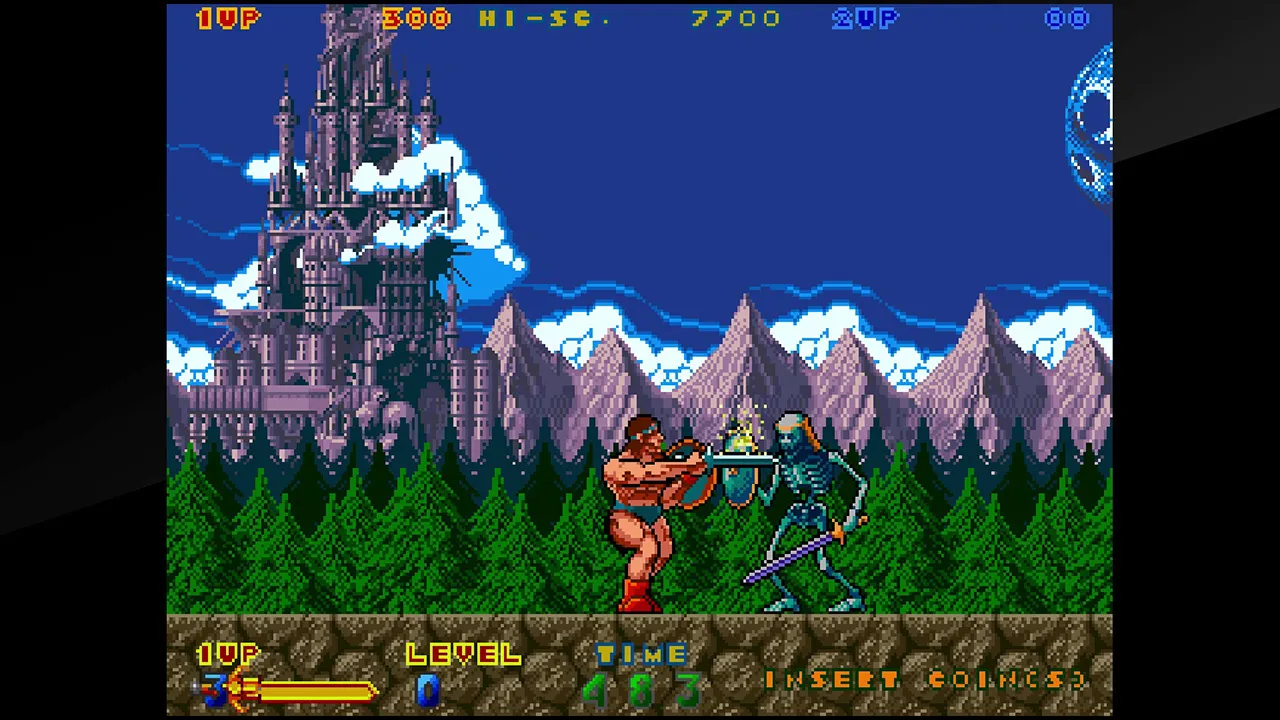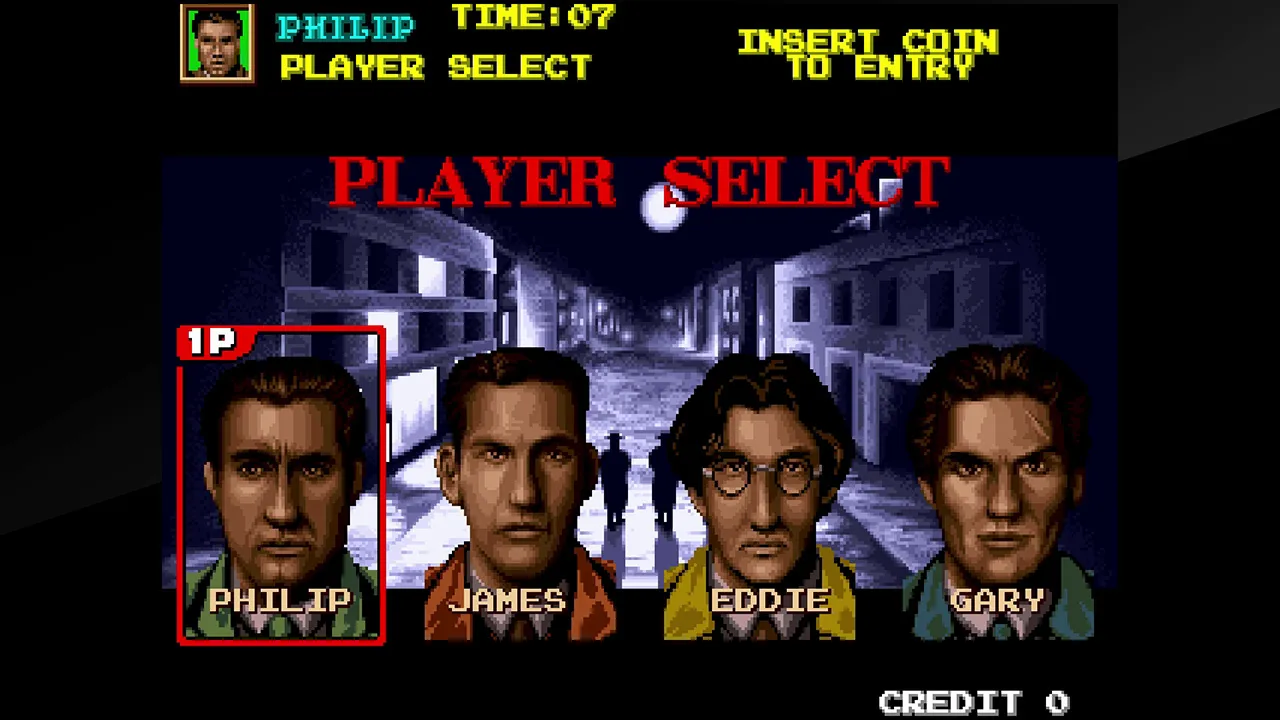Taito Milestones 3 is a fascinating collection of ten arcade gaming titles emphasizing the value of preserving old arcade gaming history. These games represent a distinct era in which gameplay mechanics and player experience are intertwined, even though they lack the complexity of current RPGs.
In Bubble Bobble and Rainbow Islands, cooperative mechanics allow players to work together to complete tasks on a single screen. This focus on teamwork enhances the gameplay experience, adds depth to the narrative, and resonates with both casual and experienced gamers.
On the other hand, Cadash adds RPG features by letting you experience character growth and exploration. The combat and narrative lines are affected by the classes that players choose. However, the effects of these decisions may not feel as significant as they do in more recent titles, as they lack the emotional weight found in games like Undertale.
The combat in this collection is very different, from Thunder Fox’s fast-paced action to Rastan Saga’s slow, measured pace. While these mechanics enhance the experience, they might also make players miss the deeper stories that characterize modern indie games. In the end, Taito Milestones 3 combines accessible gameplay with gaming gameplay to encourage thought on the development of video games.
Game Selection: A Blend of Classics and Curiosities
Taito Milestones 3 has many games, with Bubble Bobble and Rainbow Islands standing out as timeless classics. The charm of early arcade design is best exemplified by these games, where narrative and mechanics simplicity make for a fun player experience.
Players in Bubble Bobble control cute dragons that catch enemies in bubbles, fostering a sense of urgency and cooperation that resonates with new players and old fans. Making it more than just a straightforward platformer, the simple but addictive gameplay mechanics support the narrative of friendship and teamwork.
Rainbow Islands builds on this by turning the main characters back into humans and introducing a new mechanic in which players make rainbows to get through levels and beat enemies. As players climb through colorful worlds to save their friends, this innovative platforming method enhances the gameplay and deepens the narrative. Later levels are harder because you have to use rainbows strategically. This raises the emotional stakes, providing a satisfying experience for those willing to invest time and effort.
On the other hand, the collection also includes unique titles like Thunder Fox and Dead Connection, which give the anthology a new look. In Thunder Fox, players participate in an over-the-top action against a ridiculous background. The game’s run-and-gun style is reminiscent of classic shooters but has a funny twist. Its draw comes from the fast-paced gameplay and funny parts that let players enjoy the chaos without taking it too seriously.
On the other hand, the experience in Dead Connection is more chaotic, with players taking on the part of gangsters in a shooting match. Although it lacks the depth of character development in RPGs, its simple mechanics make for fast-paced entertainment. The player-driven storytelling in contemporary indie games contrasts sharply with the absence of meaningful choices or consequences, lessening the narrative impact.
To sum up, Taito Milestones 3 does a great job of combining nostalgia with accessibility. Its mix of well-known classics and interesting new games honors the past of arcade gaming.
Gameplay Mechanics: A Tapestry of Styles and Systems
Classic platformers, exciting shooters, and brawlers are just a few gameplay types that Taito Milestones 3 offers. Each title in the collection provides distinctive mechanics that players enjoy, allowing them to experience various aspects of arcade gaming.
Bubble Bobble and Rainbow Islands are platform games that show simplicity’s beauty. The main focus of both games is joint gameplay, where players must work together to get through tough parts. Bubble Bobble is fun because it only has one screen, so players must plan and talk to each other well to catch enemies in bubbles. This mechanic not only helps to enhance the fun but also helps to build a narrative of friendship at the heart of the experience. In the same way, Rainbow Islands uses a more dynamic method, using rainbows to change the environment. The gameplay is given more depth by the need for players to use these platforms in novel ways, encouraging exploration and ingenuity.
In contrast, more intricate systems are used in titles like Cadash and Warrior Blade. By allowing players to choose from different character classes that affect combat and exploration, Cadash combines classic platforming with RPG aspects. As players choose how to improve their characters while facing difficult enemies and environments, this integration of RPG mechanics introduces significant choices. However, the game’s focus on arcade-style gameplay means that character development is often limited, leaving players wanting more depth in arcade effect.
On the other hand, Warrior Blade switches to a beat ”em-up style, reminiscent of titles like Final Fight. The game’s cooperative mode lets up to two players fight through waves of enemies together, putting an emphasis on planning and teamwork. The game’s non-linear progression and branching paths enhance replayability by allowing players to explore different routes and outcomes, which is a feature that fits well with how players expect games to be played today.
With games like Runark, you can have even better cooperative adventures. One to four players can work together to fight crowds of enemies in this crazy brawler that mixes humor and action. Fast-paced gameplay forces players to work together as they plan their strikes to beat enemies that get harder and harder. The narrative, which focuses on saving animals that are in danger, adds a silly but interesting layer, making the cooperative mechanics feel both meaningful and fun.
Overall, Taito Milestones 3 expertly combines a variety of gameplay mechanics, ensuring that each title, while unique, contributes to a cohesive experience that celebrates the wide range of arcade gaming.
Graphics and Sound: A Nostalgic Palette
Taito Milestones 3 is a collection of different audio and visual adventures that evoke the charm of the arcade era. From Bubble Bobble’s bright, pixelated charm to Warrior Blade’s more detailed graphics, the art style in all titles shows each game’s unique personality.
An inviting atmosphere that is both nostalgic and accessible is created by Bubble Bobble’s bright colors and simple yet charming character designs. The animation is fluid for its time, enhancing the gameplay’s playful nature. Rastan Saga, on the other hand, has a darker, more sword-and-sorcery look, with bigger sprites that look great but can feel awkward when they move. The different levels of animation in the collection show the limitations of the technology and artistic choices of the time, providing an interesting look at how game graphics have changed over time.
The collection sounds fantastic, with catchy soundtracks that evoke a sense of nostalgia. The theme song from Bubble Bobble is one of the most well-known in gaming history. It’s a catchy tune that stays with you long after gameplay is over. Other titles share this emotional resonance, where music and sound effects work together to enhance the mood. For example, Cadash’s atmospheric soundscapes go well with its RPG parts and help players feel like they are in the world as they explore dungeons and fight powerful enemies.
Some titles, like Dead Connection, may not have the same sound effects because they lack the catchy songs that make up the collection’s best tracks. Overall, Taito Milestones 3’s graphics and sound successfully capture the essence of retro gaming, allowing players to relive the past while enjoying each title’s distinctive visual and audible storytelling.
Nostalgia and Accessibility: A Bridge Between Eras
Retro gaming fans will find Taito Milestones 3 a welcome return to the arcade experiences that shaped their formative years. With well-known titles like Bubble Bobble and Rainbow Islands, which evoke happy memories of competitive high scores and team play, the collection taps into a deep well of nostalgia.
This nostalgia factor is not just a trick; it enhances enjoyment by rekindling emotional connections to the classics, allowing players to relive special times while introducing these classics to a new generation.
But the collection is appealing to more than just experienced gamers. Taito Milestones 3 is a good arcade game for people new to the genre because it is easy to learn and has fun gameplay. Many titles have simple mechanics, making them appealing to players who want to have fun. With its chaotic brawler style, games like Runark make the experience easy to get into and urge players to try new things and work together. The simple controls and clear goals reduce the learning curve, allowing new players to jump right into the action without feeling overloaded.
The general design philosophy prioritizes fun and accessibility, even though some titles may have out-of-date mechanics that might turn off new players. The collection is a bridge between eras thanks to this fusion of arcade and new-player friendliness, which honors the charm of old gaming while welcoming new players to explore the rich history of arcade gaming. Through this lens, Taito Milestones 3 not only honors the past but also builds a community where experienced and new players can enjoy gaming together.
Extras and Presentation: A Mixed Bag of Features
The emulation experience provided by Taito Milestones 3 is excellent, allowing players to relive iconic titles with remarkable accuracy. Features like customizable screen filters enhance the visual experience, making the emulation quality largely praiseworthy.
Retro-style filters that look like CRT monitors are available for players to choose from, adding realism to the gaming experience. This attention to detail helps bridge the gap between nostalgia and current expectations, enhancing the look without compromising gameplay.
That being said, the collection does lack some extra material. The absence of artwork, behind-the-scenes features, or developer commentary greatly reduces its overall value. Unlike other sets like the Street Fighter or Mega Man ones, which add historical context and make the experience more enjoyable, Taito Milestones 3 feels a bit empty. This lack of extra content may make fans want more, especially those who like learning about the stories behind the games and how they came to be.
The collection’s ability to fully engage retro fans and newcomers is ultimately hampered by the absence of deeper material, preventing it from offering a richer, more immersive experience.
Overall Value: A Nostalgic Journey with Caveats
With standout titles like Bubble Bobble and Cadash providing engaging mechanics and nostalgic allure, Taito Milestones 3 offers a compelling collection that celebrates the essence of retro gaming. The emulation quality is excellent, and the customizable features enhance the experience, making it accessible to longtime fans and newcomers.
The collection does, however, have some major flaws. The lack of extra material like artwork and behind-the-scenes looks makes it less useful for players who want to learn more about the games’ histories. The gameplay is still fun, but some titles feel old compared to newer indie games that put more emphasis on player choice and narrative depth.
For those who love the old-school arcade experience, Taito Milestones 3 is a good buy, given its price. Prospective buyers should be aware that the collection lacks enhancing extras that could make it a must-have.
The Review
Taito Milestones 3
With its solid emulation and well-known titles, Taito Milestones 3 successfully captures the nostalgia of old-school arcade gaming. The lack of new material and modern gameplay depth may leave some players wanting more, even though the narrative is still enjoyable and accessible. This collection is a fun trip down memory lane, but it would be better with more background information and a stronger presentation.
PROS
- Strong emulation quality with customizable features.
- Nostalgic titles that resonate with retro gaming fans.
- Accessible gameplay for both casual and hardcore gamers.
CONS
- Lack of additional content, such as artwork or developer insights.
- Some titles feel dated compared to modern alternatives.
- Limited narrative depth and player choice integration.





















































